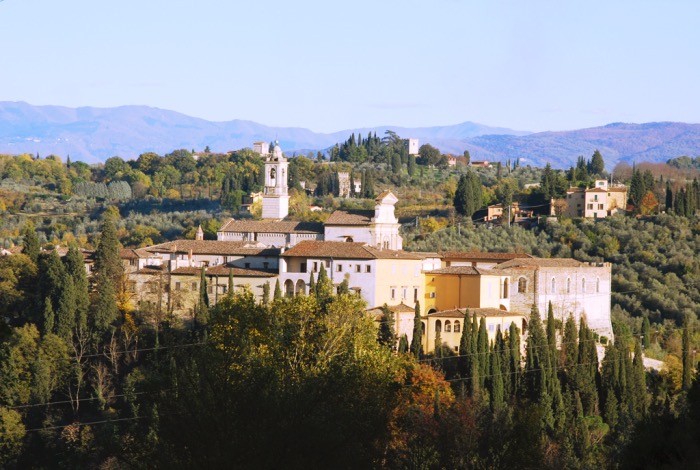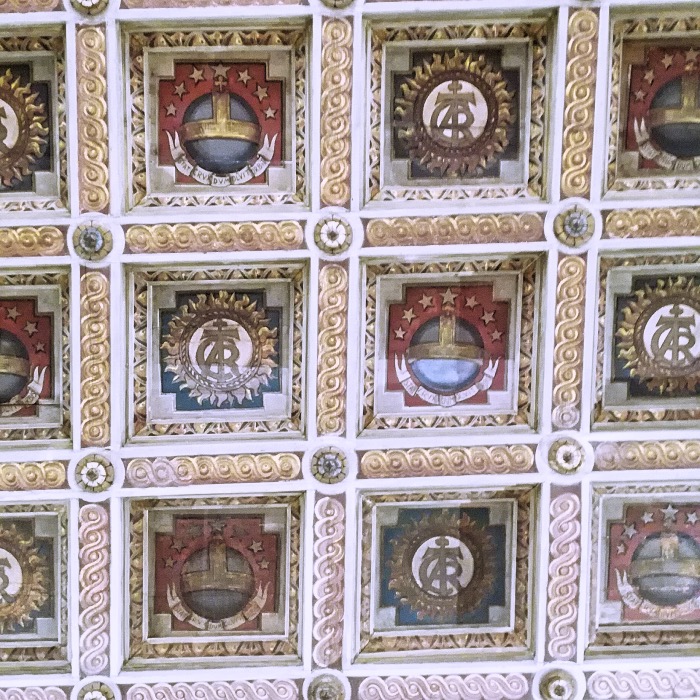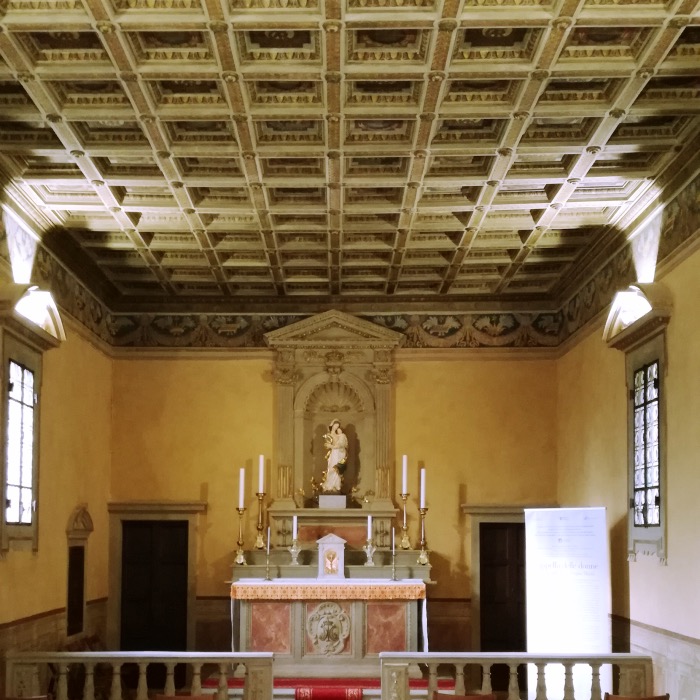
THE FLORENCE CHARTERHOUSE AND THE WOMEN’S CHAPEL
The Florence Charterhouse is a monastery that is well worth a visit, especially now that, after two years of restoration, the Cappella delle donne (Chapel of the Women), which stands in the centre of the small courtyard at the entrance to the Certosa, has returned to its former glory.
Situated on the summit of Monte Acuto, the Florence Charterhouse is a little-known place of peace where several stories intertwine. In fact, it was built in the 14th century by Niccolò Acciaiuoli, one of the leading figures in the medieval economic world of the time.
The Florence Charterhouse and the Women’s Chapel

Certosa di Firenze. Decorazioni Cappella delle donne
The Florence Charterhouse is one of the places to visit in secret Florence. It was built at the behest of the rich Florentine banker Niccolò Acciaiuoli, who had important political roles in the Kingdom of Naples and was Viceroy of Apulia at the Angevin Court.
He wanted to build the Charterhouse for the Carthusian order.
THE COMPLEX OF THE FLORENCE CHARTERHOUSE
The Florence Charterhouse is one of the places you should not miss if you visit Tuscany, the museums of Florence and the city’s surroundings. It is actually not just one building but a complex of several buildings consisting of:
- Palazzo Acciaiuoli with its Pinacoteca, which houses five important frescoes by Pontormo and other works by artists such as Perugino and Ghiralndaio;
- the monastery and the guesthouse, designed to accommodate the monastery’s guests;
- the Church of San Lorenzo and the Oratory of Santa Maria Nuova;
- the Crypt and the Parlatoium;
- the Chiostrino dei Monaci, the Sala del Capitolo and the Refectory;
- the Chiostro Grande and the Chiostrino dei Fratelli Conversi, from which the activities for the good functioning of the Charterhouse were managed;
- the Women’s Chapel.
Within this complex, the Pinacoteca is certainly a place to admire some of the masterpieces of art history, but the Crypt, with its various chapels, and the Chiostro Grande, with the works of Giovanni della Robbia, are also unmissable stops to discover the history and lifestyle of the Certosa in past centuries.
One of the most fascinating places, however, is the recently restored Women’s Chapel, which tells a piece of the Charterhouse’s history from the point of view of women.
HISTORY OF THE WOMEN’S CHAPEL
The Women’s Chapel is located in the centre of the small entrance courtyard of the Florence Charterhouse. It was built to allow women to have a place to gather and pray or to attend the Eucharistic celebration. In fact, women could arrive at the Charterhouse but could not continue beyond the entrance courtyard because the Carthusian Order was a cloistered monastic order entirely dedicated to prayer and the hermitic life, albeit with a communal lifestyle.
We do not know the architect who was commissioned to design the Women’s Chapel, but the building is mentioned in a document from 1665 and is referred to as the ‘new chapel in the square’. It also appears in a printed view by Alessandro Cecchini towards the end of the 17th century.
The Women’s Chapel was dedicated to St Lawrence, who was martyred in Rome in the 3rd century, and the 1861 Guide to the Charterhouse mentions a painting of St Lawrence on the altar. The painting was probably the work of the Florentine artist Giacinto Botti (1603-1679), referred to in other documents as Giacinto Botteghi, the author of other paintings in the Charterhouse.
A fire in 1914 destroyed the Women’s Chapel, which was rebuilt in the same year with an interior decorated in a 16th century style. On the occasion of the reconstruction, the Chapel was dedicated to the Virgin Mary in honour of the women who were allowed to attend it freely.

Certosa di Firenze. Interno Cappella delle donne
INFORMATION FOR VISITING THE CHARTERHOUSE OF FLORENCE AND THE WOMEN’S CHAPEL
Florence Charterhouse
via della Certosa 1, Galluzzo, Florence
Hours: open daily (except Monday and Sunday mornings) 10-12 | 15-18
Tickets: admission 5 euros; the price also includes a guided tour of the Charterhouse every day – except Monday and Sunday mornings – at 10, 11, 15, 16 (and 17 until the end of October 2021)

